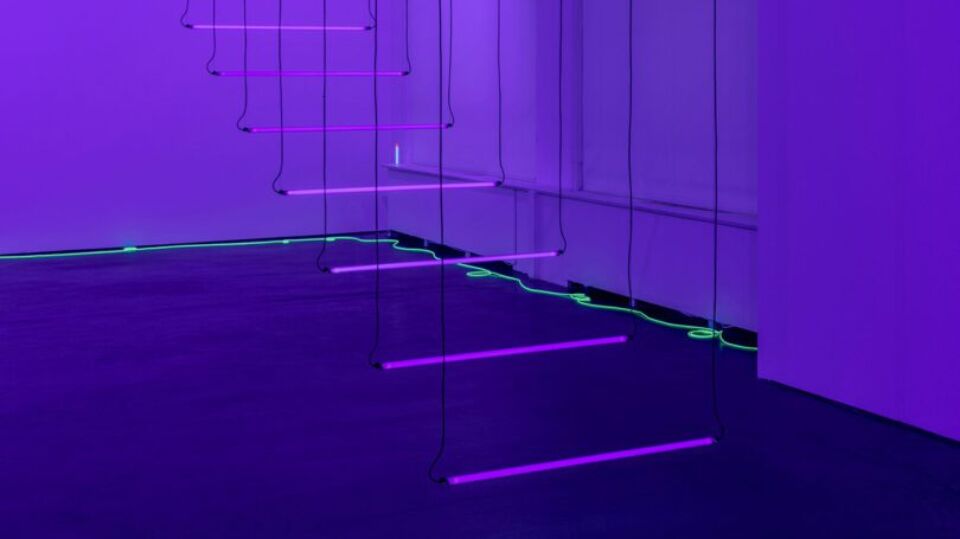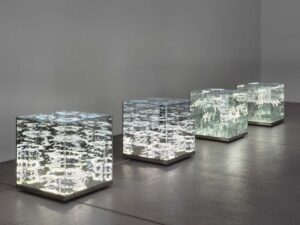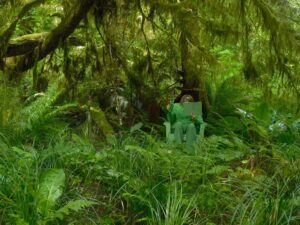The question “what is light?” followed Vienna-born artist Brigitte Kowanz (1957-2022) throughout her career. Her answer – “light is what we see” – is the basis of a new retrospective at Albertina Museum. The show, which is the first major solo exhibition to be staged since she passed away, features almost 90 luminous artworks that employ mirrors, tubes and black light. It responds to the fact that, as Kowanz said: “Light makes things visible but is itself transparent … My interest is in creating ways for light to show itself in its numerous manifestations and facets.” Beyond this, her works are filled with hidden clues and easter eggs that allude to rapid virtualisation and the rise of the information era between the 1990s and 2010s.
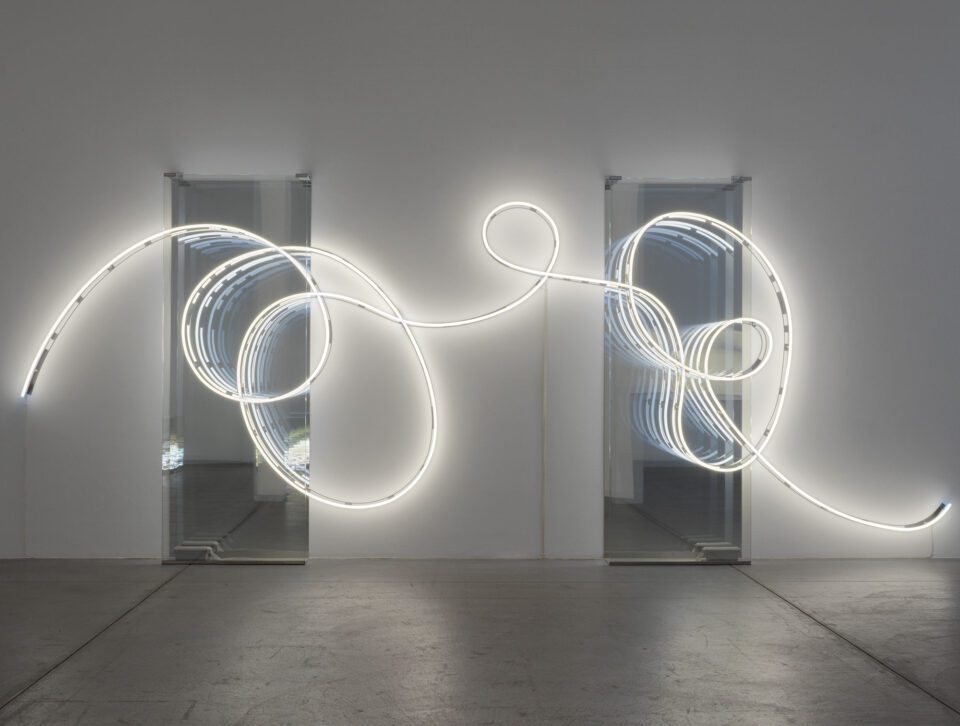
Kowanz had a keen understanding of language, messaging and technology, and this exhibition feels like a journey down Nam June Paik’s “electronic superhighway” – hurtling us into the digital age at light speed. Many of her works incorporate encrypted messages and ciphers. The sunburst-shaped Alphabet (1998/2010), for example, is just one of many pieces based upon Morse code – an early binary system of dots and dashes that forms the foundations of today’s information society. Later installations point to other groundbreaking moments in telecommunications, from the first email to the launch of Google, the iPhone and Wikipedia. www 12.03.1989 06.08.1991 (2017) is inspired by the Internet. It comprises a radiant ribbon looping in front of two mirrors, encoded with numbers referencing two key milestones in Internet history: the World Wide Web’s initial proposal at CERN on 12 March 1989, and its global accessibility starting on 6 August 1991. Here, the meticulous documentation of On Kawara’s Date Paintings meets the light-play of Cerith Wyn Evans, as well as Rosa Menkman’s dissection of digitisation.
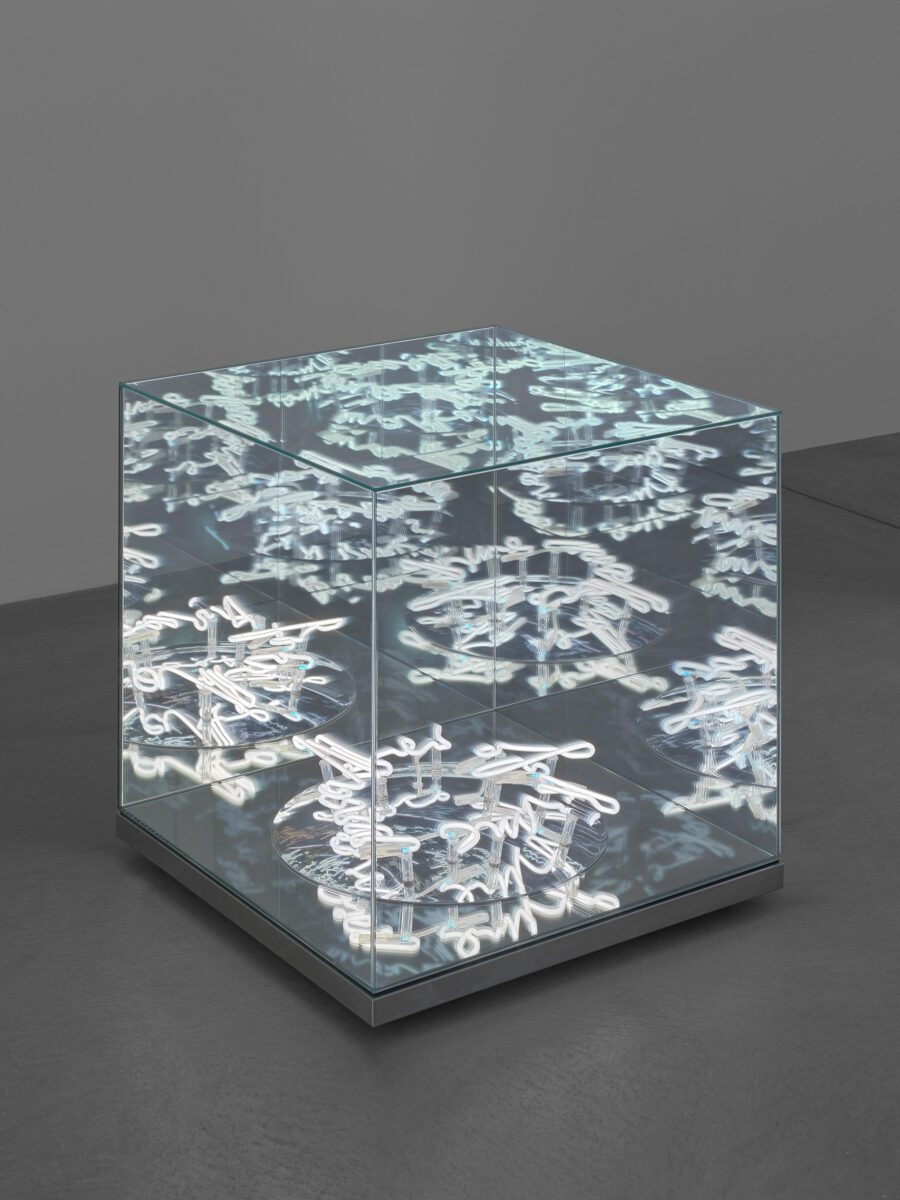
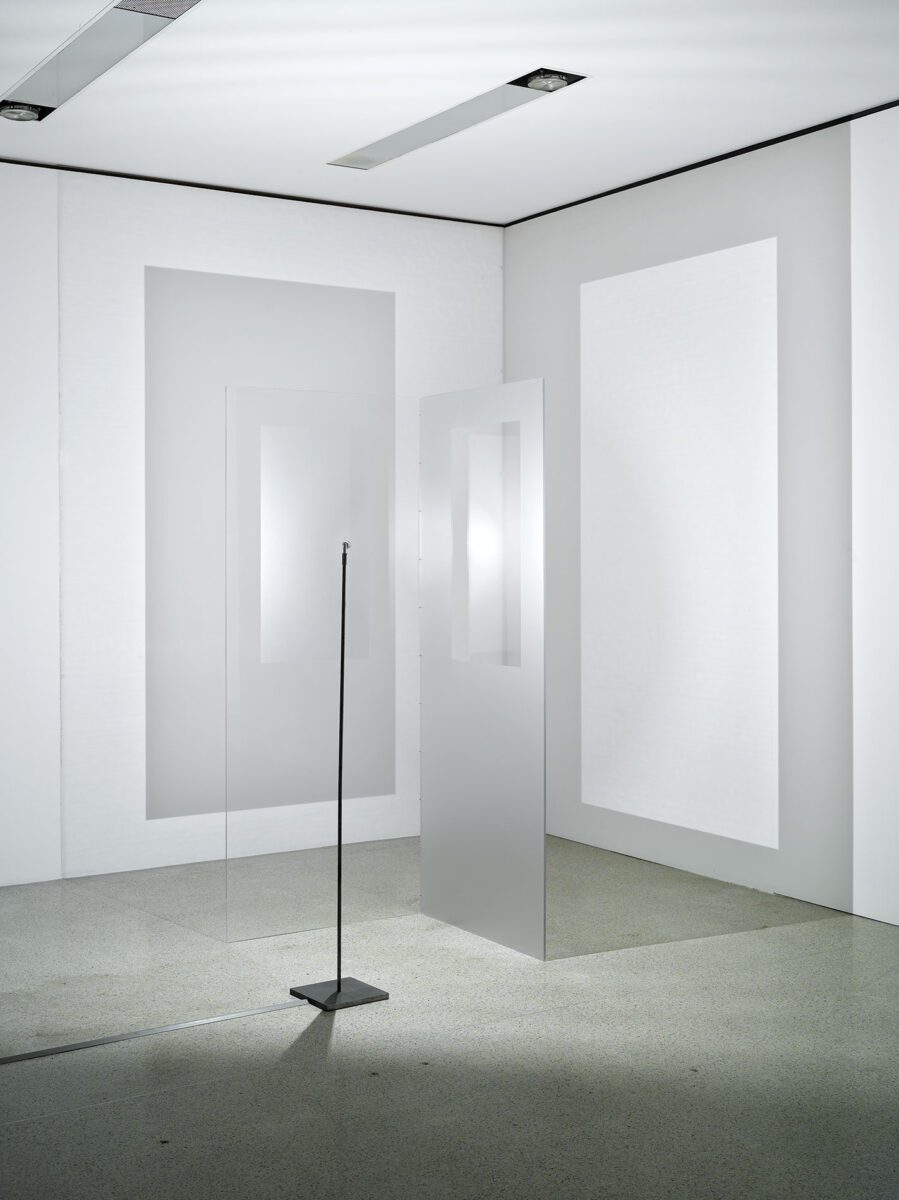
Other works follow in the tradition of minimalists like Dan Flavin, who, in 1963, attached a single, industrial fluorescent tube at a 45-degree angle to the wall of his studio – and called it art. Kowanz employs the same material for Light Steps (1990), a purple-tinted room-within-a-room, which houses a stairway that leads to nowhere. Elsewhere, 1×8 (1988/2019) riffs on Duchampian readymades and pop iconography; it comprises bottles filled with luminous pigments that glow blue and red when exposed to black light. Finally, Matter of Time (2019) plays with an iconic form: the cube. Abstract lettering floats and reflects in infinite mirrors, like a Yayoi Kusama in miniature. Viewers might also be reminded of other era-defining blocks – like Hans Haacke’s Condensation Cube (1963-1967), or Larry Bell’s iconic series of glass volumes.
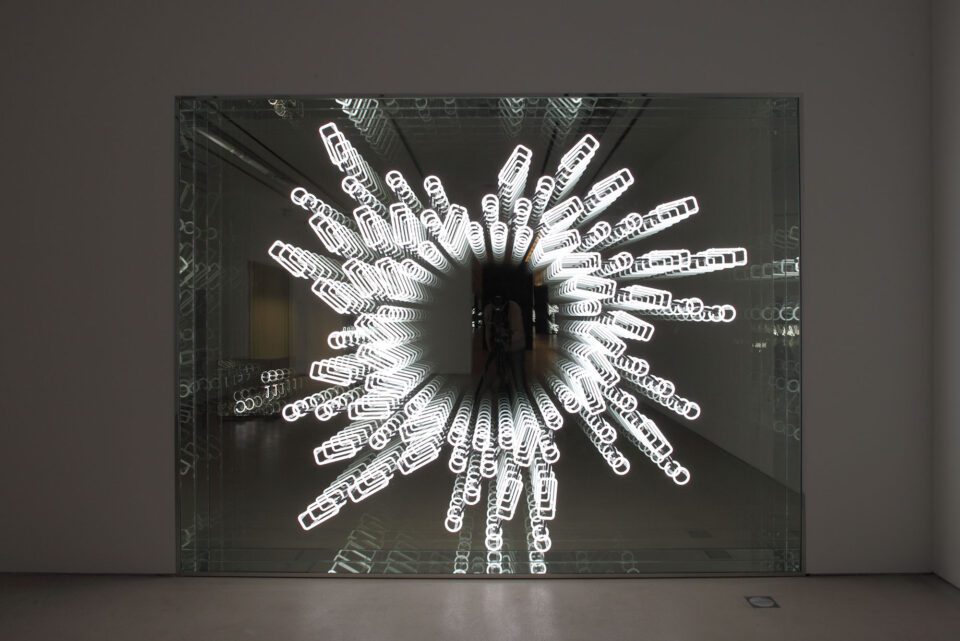
Light is What We See is electrifying. It’s a visually stimulating journey – filled with the glowing, flickering illusions audiences have come to expect of a contemporary light show. But Kowanz’s work goes much deeper than that. It is an invitation to crack the code – to learn about the history of communications and, as the world around us speeds up exponentially, to ponder: what’s the next stage in human connection?
Brigitte Kowanz: Light is What We See is at Albertina, Vienna, until 9 November.
Words: Eleanor Sutherland
Image Credits:
1. Brigitte Kowanz, Light Steps, 1990. Fluorescent tubes Dimensions variable ESTATE BRIGITTE KOWANZ © ESTATE BRIGITTE KOWANZ / Bildrecht, Vienna 2025, Photo: Marjorie Brunet Plaza.
2. Brigitte Kowanz, www 12.03.1989 06.08.1991, 2017. Neon, mirror, aluminium, enamel paint 270×670×20cm The ALBERTINA Museum, Vienna – Donation Adrian Kowanz 2025 © ESTATE BRIGITTE KOWANZ / Bildrecht, Vienna 2025, Photo: Stefan Altenburger.
3. Brigitte Kowanz, Matter of Time, 2019. Neon, mirror 70×70×70cm ESTATE BRIGITTE KOWANZ © ESTATE BRIGITTE KOWANZ / Bildrecht, Vienna 2025, Photo: Stefan Altenburger.
4. Brigitte Kowanz, Untitled, 1991. Halogen light, plexiglass, steel Dimensions variable ESTATE BRIGITTE KOWANZ © ESTATE BRIGITTE KOWANZ / Bildrecht, Vienna 2025, Photo: Ulrich Ghezzi.
5. Brigitte Kowanz, Alphabet, 1998/2010. Neon, mirror 245×320×45cm The ALBERTINA Museum, Vienna – The Haselsteiner Family Collection © ESTATE BRIGITTE KOWANZ / Bildrecht, Vienna 2025, Photo: Rainer Iglar.


